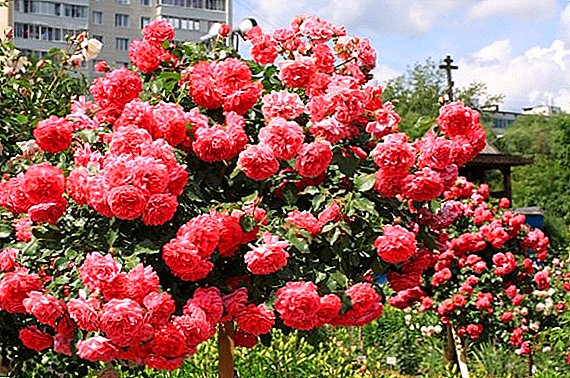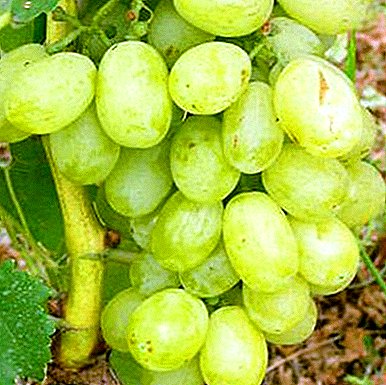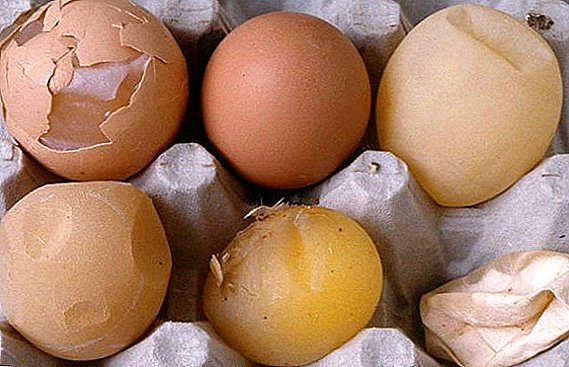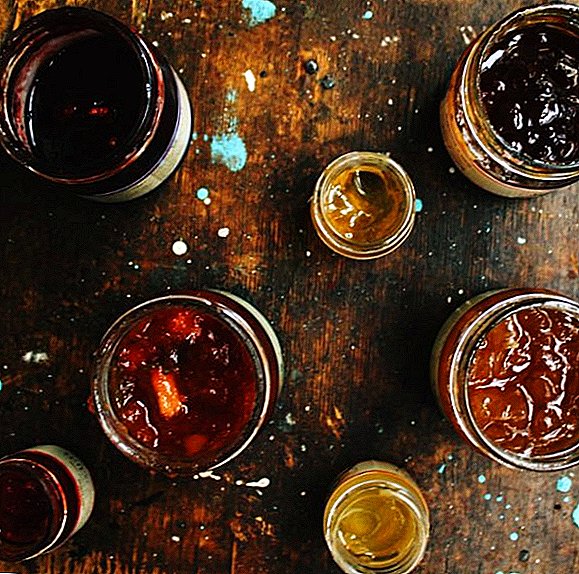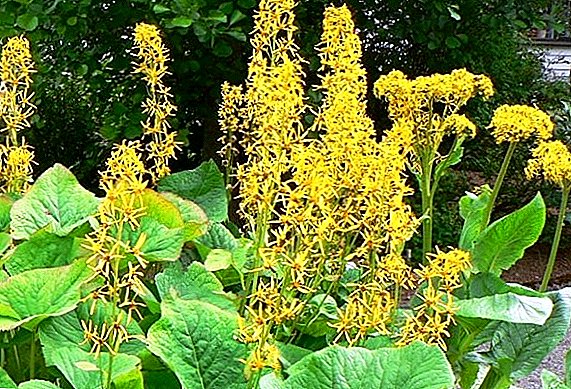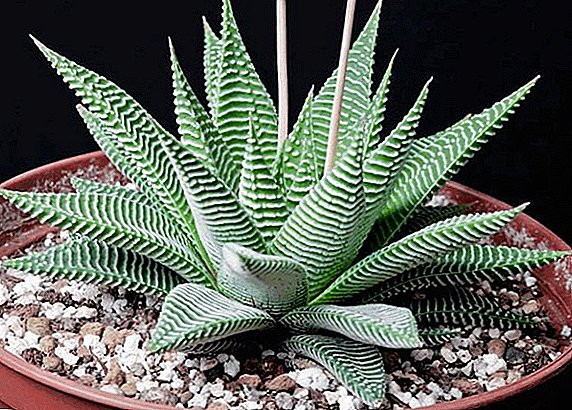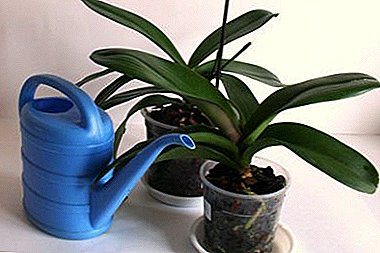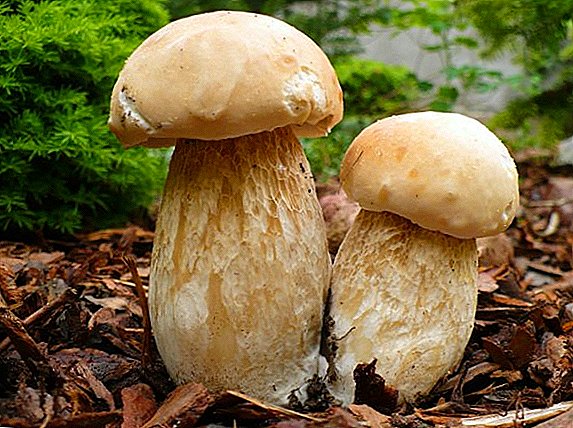 Title White mushroom received since antiquity. Then people mostly dried mushrooms. The pulp of the white fungus always remained perfectly white after drying or heat treatment. This was the reason for this name. White fungus belongs to the genus Boletus, therefore the second name of the white fungus is the boletus.
Title White mushroom received since antiquity. Then people mostly dried mushrooms. The pulp of the white fungus always remained perfectly white after drying or heat treatment. This was the reason for this name. White fungus belongs to the genus Boletus, therefore the second name of the white fungus is the boletus.
Important! After collecting the mushrooms, it is necessary to immediately begin processing them, since the white mushrooms lose their useful properties very quickly. For example, after 10 hours, the mushroom already contains half of the minerals and trace elements.
Consider the species of white fungus and their description. All of them belong to the edible mushrooms of the first category and have the same shape.
White mushroom (spruce) (Boletus edulis)
It refers to the most common form and has a typical form. The cap is brown or chestnut in color of 7-30 cm. It has a generally convex shape, sometimes pillow-shaped. Its surface is smooth and velvety and is not separated from the pulp.
 The shape of the pedicle foot has a thickening at the bottom, reaching an average height of 12 cm and is considered high in this type of white fungus. The surface of the leg is covered with a mesh and has a whitish-brownish tint. The taste is soft, the smell is delicate and the individual is usually enhanced by cooking or drying. Under the cap is a tubular layer 1-4 cm wide, which is easily separated from the pulp and has a yellowish tint.
The shape of the pedicle foot has a thickening at the bottom, reaching an average height of 12 cm and is considered high in this type of white fungus. The surface of the leg is covered with a mesh and has a whitish-brownish tint. The taste is soft, the smell is delicate and the individual is usually enhanced by cooking or drying. Under the cap is a tubular layer 1-4 cm wide, which is easily separated from the pulp and has a yellowish tint.
The pulp of the fungus is fleshy white and does not change color when broken. This species is found in spruce and fir forests in large areas of Eurasia, except Iceland, on all continents, except Australia. Fruits individually or rings. Forms mycorrhiza with deciduous and coniferous trees.
Often appears with russula green and chanterelles. Prefers old forests with moss and lichen. Positive weather conditions for the mass appearance of white mushrooms are considered short thunderstorms with warm nights and fog. It prefers sandy, sandy and loamy soils and open heated areas. Harvesting is carried out in June - October.
The nutritional qualities of the white fungus are the highest. Used in raw, boiled, dried form. By the content of nutrients and trace elements white fungus does not exceed other types of fungi, but is a powerful stimulator of digestion.
Scientists have proved that the white fungus is difficult to digest by the body due to the presence of chitin, but after drying it becomes more digestible (80%). For therapeutic purposes, traditional medicine uses anti-tumor, immune-stimulating properties of ceps.
White mushroom pine (Boletus pinophilus)
 This species resembles the general description of the white fungus, but differs in some features.. The cap is 8–25 cm in diameter, red-brown in color with a violet hue, but a little lighter on the edge. Under the skin of the cap the flesh is pink. Leg short and thick, 7-16 cm in height. Its color is slightly lighter than the cap, but covered with a light brown thin mesh. Tubular layer up to 2 cm wide yellowish. There is an early form of pine white fungus. Differs in more light coloring of a hat and pulp under it. Appears in late spring.
This species resembles the general description of the white fungus, but differs in some features.. The cap is 8–25 cm in diameter, red-brown in color with a violet hue, but a little lighter on the edge. Under the skin of the cap the flesh is pink. Leg short and thick, 7-16 cm in height. Its color is slightly lighter than the cap, but covered with a light brown thin mesh. Tubular layer up to 2 cm wide yellowish. There is an early form of pine white fungus. Differs in more light coloring of a hat and pulp under it. Appears in late spring.
This species forms mycorrhiza most often with pine. It prefers sandy soils and grows singly or in small groups. Pine white fungus is common in Europe, Central America, in the European part of Russia. Harvesting takes place from June to October.
White mushroom birch (Boletus betulicola)
 Sometimes in the regions of Russia it is called the spike because of the appearance of rye during the earing. This species has a light yellow cap, the size of which is 5-15 cm in diameter. The flesh does not change color at the break, but it has no taste. Barrel-shaped leg, whitish-brown in color with a white mesh. A tubular layer of yellowish shade up to 2.5 cm wide. Birch boletus forms mycorrhiza with birch. Fruiting singly or in groups. Likes to grow on the edges or along the roads. It is found in Western Europe, and in Russia - in the Murmansk region, Siberia, and in the Far East. Harvesting takes place from June to October.
Sometimes in the regions of Russia it is called the spike because of the appearance of rye during the earing. This species has a light yellow cap, the size of which is 5-15 cm in diameter. The flesh does not change color at the break, but it has no taste. Barrel-shaped leg, whitish-brown in color with a white mesh. A tubular layer of yellowish shade up to 2.5 cm wide. Birch boletus forms mycorrhiza with birch. Fruiting singly or in groups. Likes to grow on the edges or along the roads. It is found in Western Europe, and in Russia - in the Murmansk region, Siberia, and in the Far East. Harvesting takes place from June to October.
Did you know? The growth of the white fungus is carried out for nine days, but there are some species that grow 15 days.
Dark-Bronze White Mushroom (Boletus aereus)
 Sometimes this species is also called copper or hornbeam porcini mushroom. The cap is fleshy, convex in shape, reaching a diameter of 7-17 cm. The skin can be smooth or with small cracks, dark brown, almost black. The flesh is white, has a pleasant taste and smell, when broken, slightly darkens. The leg is cylindrical, massive, pink-brown in color with a nut-colored mesh. The tubular layer has a yellowish tint and a width of up to 2 cm, but when pressed it becomes an olive color. This species is distributed in deciduous forests with a warm climate. Most often found in Western and Southern Europe, Sweden, North America. The fruiting season is from July to October, but appears in Austria in May and June. Included in the Red Books of Ukraine, Montenegro, Norway, Denmark, Moldova.
Sometimes this species is also called copper or hornbeam porcini mushroom. The cap is fleshy, convex in shape, reaching a diameter of 7-17 cm. The skin can be smooth or with small cracks, dark brown, almost black. The flesh is white, has a pleasant taste and smell, when broken, slightly darkens. The leg is cylindrical, massive, pink-brown in color with a nut-colored mesh. The tubular layer has a yellowish tint and a width of up to 2 cm, but when pressed it becomes an olive color. This species is distributed in deciduous forests with a warm climate. Most often found in Western and Southern Europe, Sweden, North America. The fruiting season is from July to October, but appears in Austria in May and June. Included in the Red Books of Ukraine, Montenegro, Norway, Denmark, Moldova.
By taste is appreciated by gourmets more than white mushroom fir. It has similar external signs with an edible Polish mushroom (Xerocomus badius), whose flesh is blue and the leg has no netting. Also found in deciduous and mixed forests is a half-bronze white fungus (Boletus subaereus), which has a lighter color.
Boletus reticulatus, Boletus aestivalis
 The white mushroom net differs from the spruce one in a lighter coloring of the cap and a more pronounced mesh on the leg. It is considered the earliest of all types of white mushrooms. The cap reaches a diameter of 6-30 cm and has a light brown color. The pulp is fleshy white, under the tubes has a yellow tint. The stem is short, thick, club-shaped, brown in color and differs from other species by the presence of a large mesh pattern. Net white mushroom has a pleasant smell and sweet nutty taste.
The white mushroom net differs from the spruce one in a lighter coloring of the cap and a more pronounced mesh on the leg. It is considered the earliest of all types of white mushrooms. The cap reaches a diameter of 6-30 cm and has a light brown color. The pulp is fleshy white, under the tubes has a yellow tint. The stem is short, thick, club-shaped, brown in color and differs from other species by the presence of a large mesh pattern. Net white mushroom has a pleasant smell and sweet nutty taste.
The thickness of the tubular layer to 3.5 cm. Its color varies from white to greenish-yellow. The peculiarity of this species is the presence of cracks on the skin of old mushrooms. This species forms mycorrhiza with beech, oak, chestnut, hornbeam and grows on edges in dry, alkaline soils.
It is rarely damaged by insects. Grows in Europe, North Africa, North America. Harvesting is carried out from May to October. Net white fungus is more similar to birch, which has a lighter cap and a shorter net.
White mushroom oak (Boletus quercicola)
 A distinctive feature of the white oak fungus is a brown hat with a grayish tint. It is much darker in color than the birch species. The flesh is less dense than other species. It grows in the Caucasus, in Primorsky Krai. Harvesting is carried out in June-October. It grows profusely, which is not typical for white mushrooms.
A distinctive feature of the white oak fungus is a brown hat with a grayish tint. It is much darker in color than the birch species. The flesh is less dense than other species. It grows in the Caucasus, in Primorsky Krai. Harvesting is carried out in June-October. It grows profusely, which is not typical for white mushrooms.
Important! Very similar to the white mushroom - gall mushroom. It is inedible because of its bitterness. Its main differences from the white fungus are the pinking tubular layer and the darker color of the mesh on the leg.
Semi-white mushroom (Boletus impolius)
The semi-white fungus belongs to the genus of boletus and may be called yellow boletus. The cap reaches a diameter of 5-15 cm with a smooth skin of a dull light brown color. The pulp of the fungus is dense, light yellow. The taste is slightly sweet, and the smell reminds carbolic acid.
 The leg is thick, cylindrical in shape, up to 15 cm high, straw-colored. The mesh pattern on the leg is missing, but the surface is rough. Tubular layer up to 3 cm thick yellow. Grows in oak, beech, hornbeam forests and prefers moist clay soils. Yellow boletus belongs to the thermophilic mushrooms and is common in Polesie, Carpathian, in the central and southern European part of Russia. Harvesting is done from May to autumn.
The leg is thick, cylindrical in shape, up to 15 cm high, straw-colored. The mesh pattern on the leg is missing, but the surface is rough. Tubular layer up to 3 cm thick yellow. Grows in oak, beech, hornbeam forests and prefers moist clay soils. Yellow boletus belongs to the thermophilic mushrooms and is common in Polesie, Carpathian, in the central and southern European part of Russia. Harvesting is done from May to autumn.
In some sources, due to the specific smell described as conditionally edible fungus. In taste is not inferior to the classic white mushroom. After drying and scalding the smell almost disappears completely. On the external signs it looks like a boletus maiden, but differs from it by a specific smell and does not change the color of the pulp at the break.
Boletus maiden (Boletus appendiculatus)
 Looks like the description with a boletus yellow, but has a pleasant smell, and the flesh on the break turns blue. The cap in diameter reaches 8-20 cm, has a golden or red-brown velvety color. The pulp of the fungus is yellow, with a blue tint. The leg is thick, has a narrowing at the base and grows 7–15 cm high. It has a light color and is covered with a yellow mesh. The tubular layer is up to 2.5 cm thick, bright yellow in color and blue when pressed. Borovik maiden forms mycorrhiza with deciduous trees and grows in southern Europe. Harvesting is carried out during the summer - autumn.
Looks like the description with a boletus yellow, but has a pleasant smell, and the flesh on the break turns blue. The cap in diameter reaches 8-20 cm, has a golden or red-brown velvety color. The pulp of the fungus is yellow, with a blue tint. The leg is thick, has a narrowing at the base and grows 7–15 cm high. It has a light color and is covered with a yellow mesh. The tubular layer is up to 2.5 cm thick, bright yellow in color and blue when pressed. Borovik maiden forms mycorrhiza with deciduous trees and grows in southern Europe. Harvesting is carried out during the summer - autumn.
Borovik royal (Boletus regius)
 Royal Borovik differs from other types of pink-red cap and bright yellow leg with a thin mesh pattern in the upper part. The cap reaches a diameter of 6-15 cm and has a smooth skin, but sometimes becomes covered with mesh cracks. The pulp of the fungus is dense, yellow in color, with a fracture turning blue. The mushroom has a pleasant smell and taste. Leg thickened, has a height of 5-15 cm. The tubular layer is up to 2.5 cm thick yellow.
Royal Borovik differs from other types of pink-red cap and bright yellow leg with a thin mesh pattern in the upper part. The cap reaches a diameter of 6-15 cm and has a smooth skin, but sometimes becomes covered with mesh cracks. The pulp of the fungus is dense, yellow in color, with a fracture turning blue. The mushroom has a pleasant smell and taste. Leg thickened, has a height of 5-15 cm. The tubular layer is up to 2.5 cm thick yellow.
Royal white mushroom grows in deciduous forests. Prefers sandy and calcareous soils. It is found in the Caucasus, the Far East. The period of fruiting is July - September. The mushroom has excellent taste and is used in raw or canned form.
Did you know? In Ukraine, in the Ivano-Frankivsk region, near the village of Verkhniy Maidan, 118 pieces of white mushrooms were collected on 16 square meters. A white mushroom weighing 6.75 kg was found in Russia near Vladimir in 1964.
White mushroom is the most famous and favorite for each mushroom picker. Its superiority can be traced both in large sizes and in excellent taste and nutritional qualities. When collecting mushrooms, never forget the basic rule of a mushroom picker: if you are not sure even of a familiar mushroom, throw it away, do not take chances!



